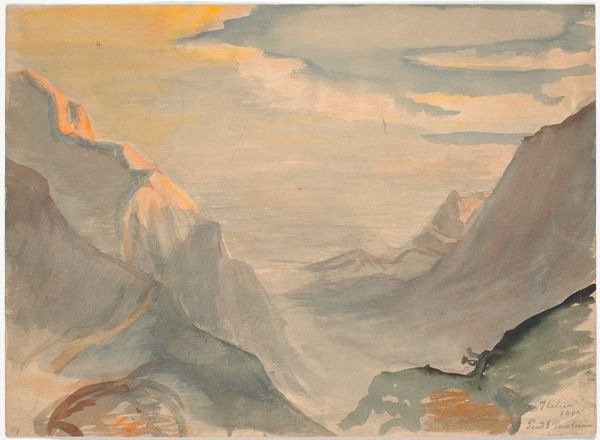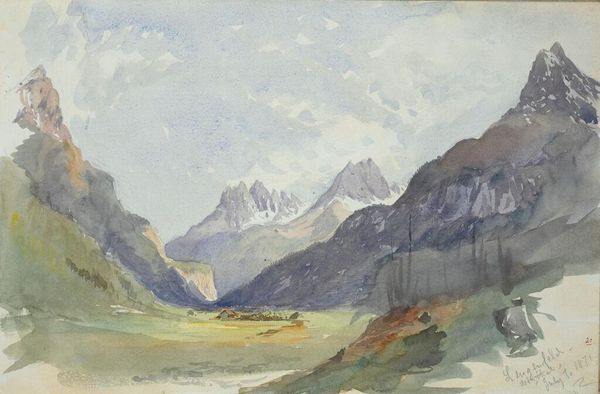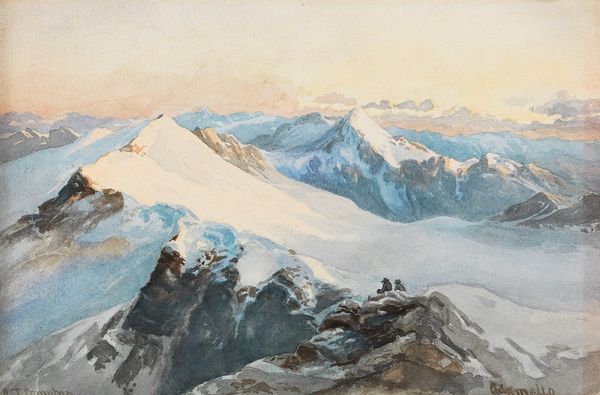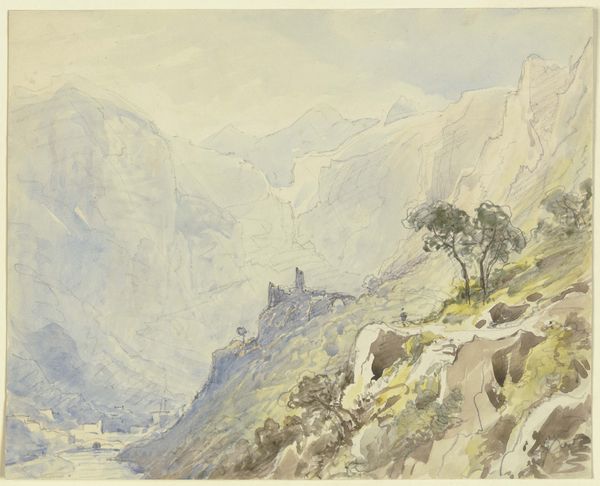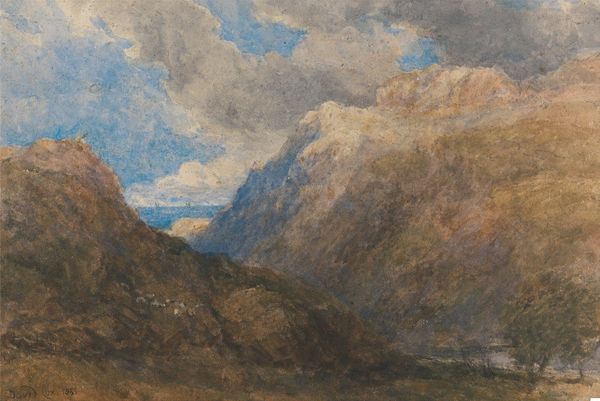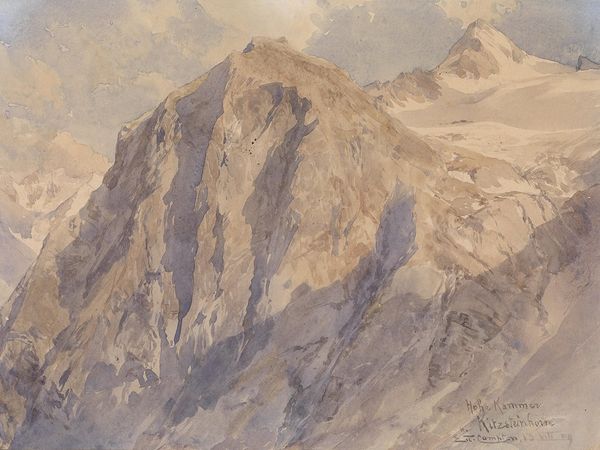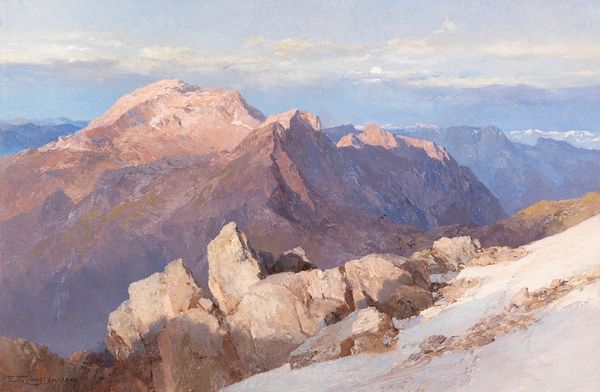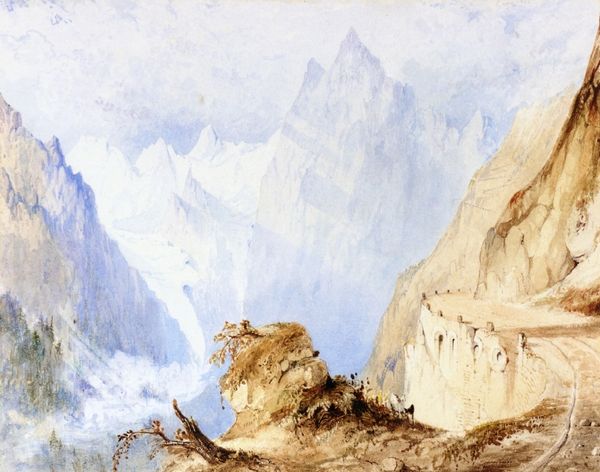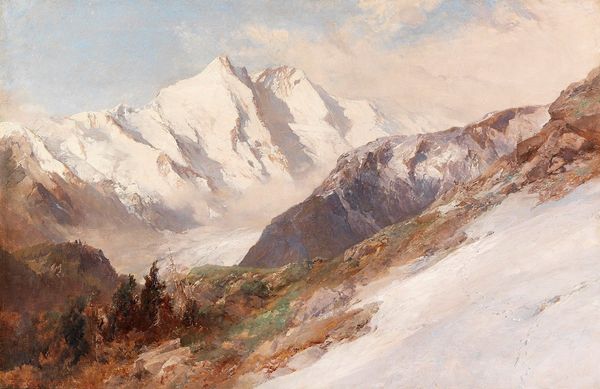
Copyright: Public Domain: Artvee
Editor: Here we have John Singer Sargent’s “Mountain Scene,” created around 1908, seemingly in watercolor and perhaps other water-based media. It's striking how cool and monumental the mountain range appears, almost spectral in its hazy, blue-grey tonality. What’s your take on it, seeing it through a historical lens? Curator: It's fascinating to consider this work within Sargent's oeuvre and the art world of the early 20th century. While celebrated for his society portraits, Sargent also dedicated himself to plein-air landscapes. Why do you think an artist primarily known for portraits would spend time capturing landscapes en plein air? Editor: I imagine it allowed him to explore different formal qualities outside the demands of portraiture— a certain freedom, maybe? Was this a common practice at the time? Curator: Exactly. And, thinking about it more broadly, this was a period where ideas about national identity were often tied to landscape. Artists were commissioned to picture landscape as "nation". Sargent, however, maintains an atmospheric abstraction here, possibly reflecting a tension between his personal artistic vision and any potential nationalistic reading of mountainous terrains. Does this painting evoke any specific political sentiments, or does it feel more divorced from those concerns? Editor: It does feel very removed, more about the sublime power of nature than any political claim. The lack of human presence really reinforces that. It is intriguing to think of it alongside more overtly political landscape painting, though. Curator: Indeed. Seeing it as part of broader trends, then perhaps as a deliberate departure – that helps to illuminate the art’s social position. Understanding those conversations occurring in and around artistic production give insights beyond aesthetic considerations alone. Editor: That definitely puts the work in a new context for me! Thanks! Curator: My pleasure! I enjoyed your interpretation of its emotive content.
Comments
No comments
Be the first to comment and join the conversation on the ultimate creative platform.
